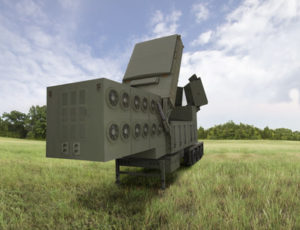Poland approved a Letter of Acceptance with the U.S. Army to be the first international customer for the RTX [RTX] Lower Tier Air and Missile Defense Sensors (LTAMDS) alongside dozens of Patriot launchers, the company said Monday.
RTX said the Polish Minister of National Defense, Mariusz Błaszczak, accepted the letter to procure 12 LTAMDS radars and 48 more Patriot launchers in a Foreign Military Sale as part of the country’s WISLA Phase 2 air and missile defense architecture. WISLA includes
Lockheed Martin [LMT] Patriot Advanced Capability-3 Missile Segment Enhancement (PAC-3 MSE) missiles.

Phase 1 of WISLA led to the delivery and testing of four Patriot fire units. The company said it delivered the last two fire units for Phase 1 earlier in 2023 while those systems are due to finish system integration and check-out in October. WISLA Phase 1 includes the Patriots and the Northrop Grumman [NOC] Integrated Battle Command System (IBCS).
“With the introduction of LTAMDS, Poland will become the first country after the U.S. to complement the combat-proven Patriot with LTAMDS which provides extended range and full, 360-degree coverage to detect and defend against complex, highly coordinated, multi-threat attack scenarios,” Tom Laliberty, president of Land and Air Defense Systems at RTX’s Raytheon business unit, said in a statement.
LTAMDS includes a primary radar array on the front with two secondary arrays on the back, allowing the system to detect threats from all directions.
Notably, Poland is the first country to field IBCS, ahead of the U.S. Army.
Poland agreed to a $4.75 billion deal with the U.S. in 2018 to purchase the Patriot missile defense system and IBCS (Defense Daily, March 28, 2018).
Northrop Grumman then won a $713 million contract from the Army to produce the IBCS systems for Poland in 2019 (Defense Daily, March 15, 2019).
Then, in June, the State Department approved a potential $15 billion deal for more Patriot defense equipment to integrate with IBCS. That deal included 48 Patriot M903 launch stations, up to 644 PAC-3 MSE missiles and 12 RTX LTMDS radars (Defense Daily, June 28).
In March, Northrop Grumman said the Polish IBCS systems should reach a base operational capability by the end of this summer (Defense Daily, March 28).
RTX underscored WISLA Phase 1 entailed Raytheon working with nine Polish suppliers for the Patriot system and now they are part of the company’s global supply chain. This participation is set to expand in Phase 2, including opportunities to support the LTADMS.
The company is working with five unspecified Polish companies, members of the state-owned PGZ group, to receive technology, equipment and training to “enable them to produce and maintain components” of LTAMDS, RTX said. The company noted it expects them to become part of the LTAMDS supply chain as well.
LTAMDS is also part of the U.S. Army’s future integrated air and missile defense system that will replace Patriot, alongside the IBCS and a missile launcher.
LTAMDS is focused around a Gallium Nitride Active Electronically Scanned Array radar for better detection and tracking of various aircraft and missile threats.
Relatedly, RTX noted it has completed production on the six LTAMDS under contract for the U.S. Army and is currently undergoing testing at government and company test sites.
On Aug. 25 the ministry also announced it approved 13 offset contract agreements worth about $238 million with RTX and Lockheed Martin [LMT] for components for WISLA Phase 2. This includes service, repair and production facilities to be established in Poland to support the WISLA system elements like LTAMDS and PAC-3 MSE missiles.
Błaszczak said he is “very pleased that after five years we can once again finalize offset agreements which precede the next phase of our cooperation with regard to acquiring further batteries of the Patriot system for the equipment of the Polish Armed Forces.”
He added that Poland sought to both acquire modern armaments and ensure security by being able to supply and service the equipment with Polish firm participation.
“For that reason, the Polish arms industry will co-produce certain components for omnidirectional radars, super modern radars. So far, we have been using zone radars. Now they will be omnidirectional radars, which will be supplied together with the Patriot system. The Polish defense industry will be able to develop missile technology,” Błaszczak continued.
The minister said the offset commitments also include the possibility that Polish firms will help produce fuel for the Lockheed Martin M142 High Mobility Artillery Rocket System (HIMARS) as well as servicing and operational support of F-16 and C-130 aircraft.
The ministry noted offset negotiations are still ongoing with Northrop Grumman, with an agreement it expects will ultimately “result in a significant technology transfer.”